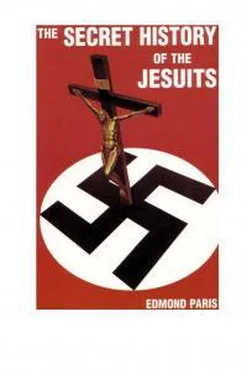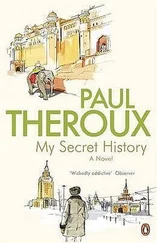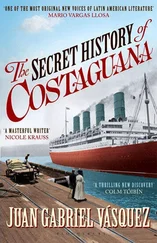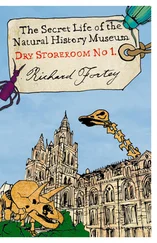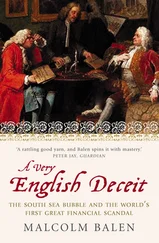THE SPIRITUAL EXERCISES
21
fellow-students according to his peculiar methods brought him into trouble again with the Inquisition. Becoming more prudent, he met withjust six of his college friends, two of which will become highly esteemed recruits: Salmeron and Lainez.
What did he have in himself that so powerfully attracted young people to an old student? It was his ideal and a little charm he carried on himself: a small book, in fact a very minute book which is, in spite of its smallness, amongst those which have influenced the fate of humanity. This volume has been printed so many times that the number of copies is unknown; it was also the object of more than 400 commentaries. It is the textbook of the Jesuits and at the same time the resume of the long inner development of their master: the
"Spiritual Exercises".(11)
Mr Boehmer says later:
"Ignatius understood more clearly than any other leader of men who preceded him that the best way to raise a man to a certain ideal is to become master of his imagination. We "imbue into him spiritual forces which he would find very difficult to eliminate later", forces more lasting than all the best principles and doctrines; these forces can come up again to the surface, sometimes after years of not even mentioning them, and become so imperative that the will finds itself unable to oppose any obstacle, and has to follow their irresistible impulse".(12)
Thus all the "truths" of the Catholic dogma will have to be, not only meditated, but lived and felt by the one who devotes himself to these
"Exercises", with the help of a "director". In other words, he will have to see and relive the mystery with the greatest possible intensity. The candidate's sensitiveness becomes impregnated with these forces whose persistence in his memory, and even more so in his subconscious, will be as strong as the effort he made to evoke and assimilate them. Beside sight, the other senses such as hearing, smell, taste and touch will play their part. In short, it is mere controlled auto-suggestion. The angels' rebellion, Adam and Eve driven out of Paradise, God's tribunal, the evangelical scenes and phases of the Passion are, as one would say, relived in front of the candidate. Sweet and blissful scenes alternate with the most sombre ones at a skilfully arranged rythm. No need to say that Hell has the prominent part in that "magic lantern show", with its lake of fire into which the damned are thrown, the awful concert of screams, the atrocious strench of sulphur and burning flesh. Yet Christ is always there to sustain the visionary who doesn't know how to thank him for not having thrown him already into hell to pay for his past sins.
Here is what Edgar Quinet wrote:
"Not only visions are pre-arranged, but also sighs, inhalings, breathing ( 1 1 ) and (12) H. Boehmer, op.cit., pp.25, 34-35.
22
THE SECRET HISTORY OF THE JESUITS
are noted down; the pauses and intervals of silence are written down like on a music sheet. In case you do not believe me, I will quote: "The third way of praying, by measuring the words and periods of silence". This particular manner of praying consists of leaving out some words between every breath; and a little further: "Make sure to keep equal gaps between every breath and choking sob and word". (Et paria anhelituum ac vocum interstitia observet), which means that the man, being inspired or not, becomes just a machine which must sigh, sob, groan, cry, shout or catch one's breath at the exact moment and in the order which experience shows to be the most profitable". (12a)
It is understandable that after four weeks devoted to these intensive Exercises, with a director as his only companion, the candidate would be ripe for the subsequent training and breaking.
This is what Quinet has to say when referring to the creator of such an hallucinatory method:
"Do you know what distinguishes him from all the ascetics of the past?
The fact that he could observe and analyse himself logically and coldly in that state of rapture, while for all the others even the idea of reflection was impossible.
Imposing on his disciples actions which, to him, were spontaneous, he needed just thirty days to break, with this method, the will and reasoning, in the manner in which a rider breaks his horse. He only needed thirty days
"triginta dies", to subdue a soul. Note that Jesuitism expanded together with modern inquisition: while the inquisition dislocated the body, the spiritual Exercises broke up the thoughts under Loyola's machine".(12b) In any case, one could not examine his "spiritual" life too deeply, even without the honour of being a Jesuit; Loyola's methods are to be recommended to the faithful and ecclesiastics in particular, as we are reminded by commentators such as R.P. Pinard de la Boullaye, author of
"Mental prayer for all"; inspired by saint Ignatius, this very valuable aid for the soul would, we think, be more explicit if the title read "alienation" instead of
"prayer".
(12a) Michelet et Guinet: "Des Jesuites", (Hachette, Paulin, Paris 1845, pp.185-187). (12b) Michelet et Guinet: "Des Jesuites", (Hachette, Paulin, Paris, 1845, pp.185-187).
23
Section 1
Chapter 3
The founding of the Company
"The Society of Jesus" was constituted on Assumption Day in 1534, in the chapel of Notre-Dame de Montmartre.
Ignatius was then forty-four years old. After communion, the animator and his companions vowed to go to the Holy Land, as soon as their studies were finished, to convert the infidels. But the following year found them in Rome where the pope, who was then organising a crusade against the lurks with the German Emperor and the Republic of Venice, showed them how impossible their project was because of it. So Ignatius and his companions dedicated themselves to missionary work in Christian lands; in Venice, his apostolate roused again the suspicions of the Inquisition. The Constitution of the Company of Jesus was at last drafted and approved in Rome, by Paul III, in 1540, and the Jesuits put themselves at the disposition of the pope, promising him unconditional obedience, Teaching, confession, preaching and charitable work were the field of action for this new Order, but foreign missions were not excluded as, in 1541, Francis Xavier and two companions left Lisbon to go and evangelise the Far East. In 1546, the political side of their career was launched, when the pope chose Lainez and Salmeron to represent him at the Council of Trent in the capacity of "pontifical theologians".
Mr Boehmer writes:
"Then, the Order was employed by the pope only on a temporary basis. But it performed its functions with so much promptitude and zeal that, already under Paul III, it had implanted itself very firmly into all chosen kinds of activities and won the confidence of the Curia for all time".(12d) This confidence was fully justified; the Jesuits, and Lainez in particular, together with their devoted friend Cardinal Morone, became the cunning and untiring champions of pontifical authority and intangibility of the ( l 2 d ) H. Boehmer, op.cit., pp.47-48.
24
THE SECRET HISTORY OF THE JESUITS
dogma, during the three sessions of that Council ending in 1562. By their clever manoeuvres and dialectics, they succeeded in defeating the opposition and all "heretic" claims including marriage of priests, communion with the two elements, use of the vernacular in services and, especially, reform of the papacy. Only the reform of convents was retained on the agenda. Lainez himself, by a forceful counter-attack, upheld pontifical infallibility which was promulgated three centuries later by the Vatican Council. (13) The Holy See emerged strengthened from the crisis where it nearly foundered, thanks to the steadfast actions of the Jesuits. The terms chosen by Paul III to describe this new Order in his Bull of Authorisation were then amply justified: "Regimen Ecclesiae militantis".
Читать дальше
